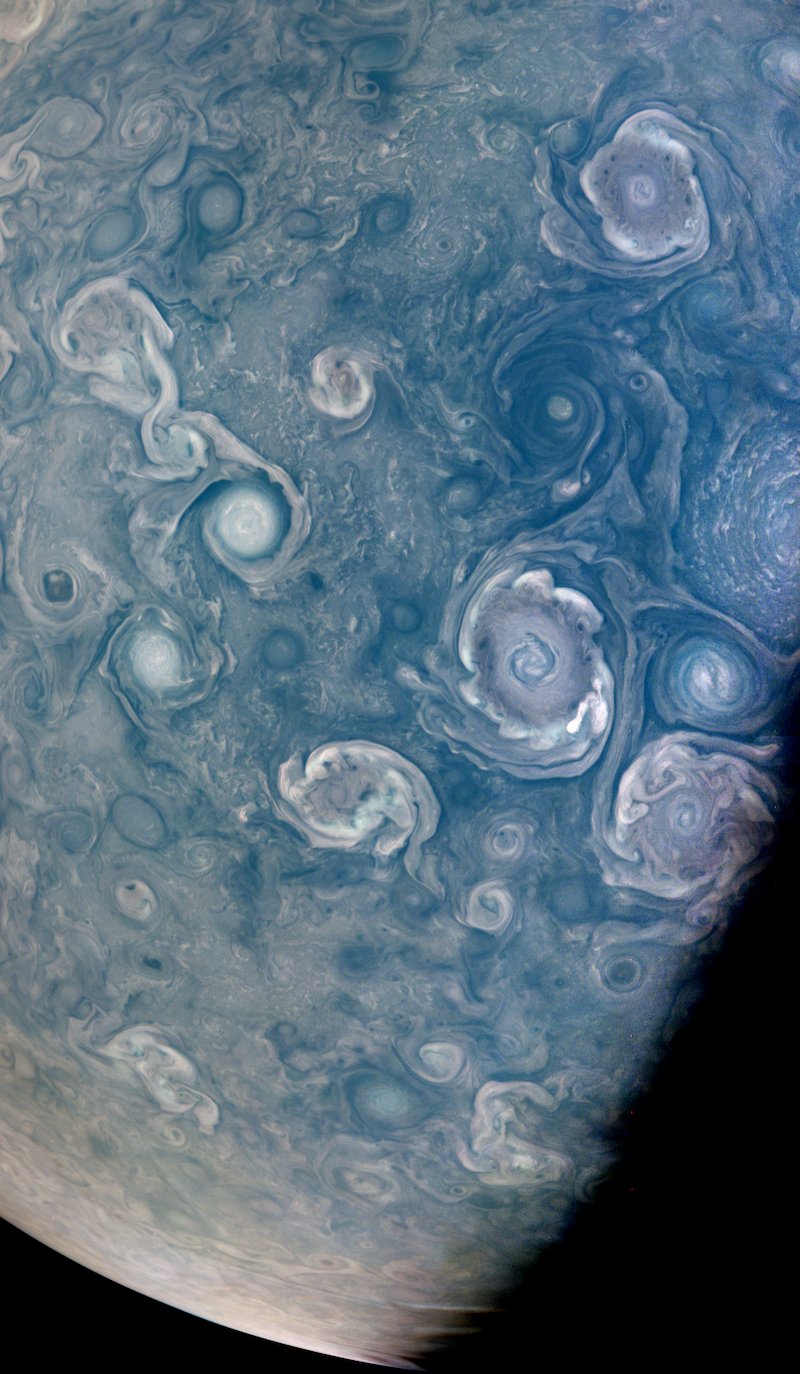NASA spacecraft captures striking view of vortices near Jupiter's north pole

On July 5, 2022, as NASA's Juno mission completed its 43rd close flyby of Jupiter, its JunoCam imager onboard the spacecraft captured this striking view of vortices, hurricane-like spiral wind patterns, near the planet's north pole.
Brian Swift, a NASA citizen scientist, created this enhanced color and contrast view of vortices using raw JunoCam image data. When the raw image was taken, the Juno spacecraft was about 15,600 miles (25,100 kilometers) above Jupiter's cloud tops, at a latitude of about 84 degrees.
According to NASA, these powerful storms can be over 30 miles (50 kilometers) in height and hundreds of miles across. Jupiter's vortices have different shapes, sizes, and colors and the difference in appearance is caused by the physical properties within the clouds of the vortices.
NASA's citizen science project, Jovian Vortex Hunter, seeks help from the public to find interesting features in the Jovian atmosphere. By analysing stunning images from the agency's Juno spacecraft, you can help astrophysicists catalogue hurricane-like vortices and other atmospheric phenomena.
As our #JunoMission completed its 43rd close flyby of Jupiter on July 5th, it captured this striking view of vortices — hurricane-like spiral wind patterns — near the planet’s north pole. Details: https://t.co/TNDginw5mHImage processed by Brian Swift pic.twitter.com/Si1jmkyhiN
— NASA Solar System (@NASASolarSystem) July 26, 2022
NASA's Juno spacecraft is the first explorer to peer below Jupiter's dense clouds to answer questions about the gas giant itself and the origins of our solar system. Using its suite of science instruments, the solar-powered spacecraft captures and sends images from the largest planet in our solar system back to researchers on Earth.
Juno arrived at Jupiter on July 4, 2016, and its prime mission concluded in July 2021. Now in an extended mission, Juno will continue its investigation of the full Jovian system - Jupiter and its rings and moons - through September 2025.










